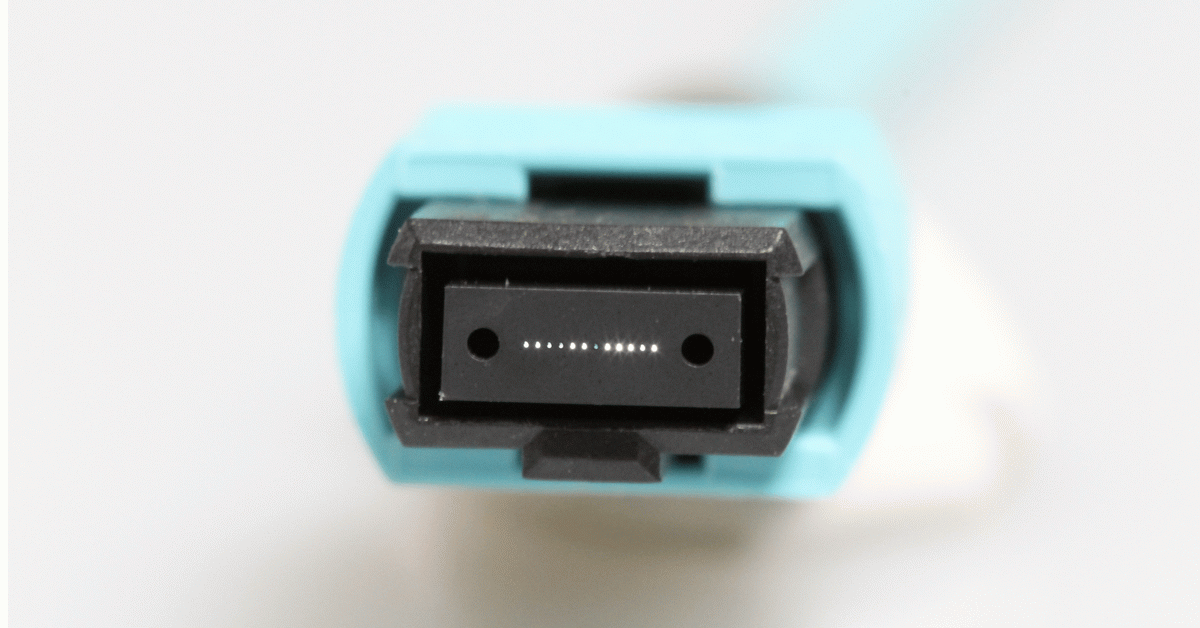
Let’s clear up some confusion! MPO (Multi-Fiber Push-On) and MTP (Mechanical Transfer Push-On) connectors might sound like tech jargon, but they’re essential tools in a network engineer's toolkit. Whether you’re upgrading your infrastructure or keeping things running smoothly, knowing the difference between these connectors can make all the difference. These small yet powerful components are key to ensuring high-speed data transmissions, which are critical in today's networks.
Detailed Explanation of MPO and MTP
All MTPs are MPOs, but not all MPOs are MTPs! Got it?!? Just kidding, of course. MPO and MTP are often used interchangeably, but there are important differences. MPO and MTP cables/connectors have played a crucial role in allowing higher-speed data transmissions. Quite simply, MPO and MTP cables allow multiple fibers to be connected by a single connector, thus increasing throughput capability. Most MPO and MTP cables offer 8, 12, and 24 fiber configurations, allowing 800GB connectivity today.
They are essentially the same connector with a few differences inside the casing or ferrule. MTP is technically a type of an MPO connector that was designed to improve the mechanical and optical performance of a standard MPO connector. MTP connectors can interconnect with other MPO-based infrastructure, but MPO connectors will not work in MTP-based infrastructure.
Here’s a quick explanation of the differences and their significance:
MPO (Multi-Fiber Push-On) Connectors:
The first of its kind, allowing multiple fibers to be connected via a single connection.
%20Connectors.png?width=354&height=118&name=MPO%20(Multi-Fiber%20Push-On)%20Connectors.png)
MTP (Mechanical Transfer Push-On) Connectors:
MTP connectors are designed with several key enhancements that improve upon the standard MPO connector.
%20Connectors.png?width=350&height=115&name=MTP%20(Mechanical%20Transfer%20Push-On)%20Connectors.png)
These design improvements include:
- Metal Pin Clamp: MPO uses plastic pin clamps, which can lead to the breaking of pins. Metal minimizes inadvertent breaking when mating connectors and also has a special spring mechanism that maximizes the gap between the fiber and spring, protecting the fiber strands from damage during insertion.
- Floating Ferrule: The ferrule in both MPO and MTP connectors helps with fiber alignment and maintaining precision during the connector's mating process. MTP introduced a “floating” ferrule that helps the connectors maintain physical contact even if there is strain on the cable.

- Guide Pins: Compared to the MPO flat-ended guide pin, the MTP connectors use an elliptical guide pin, which significantly reduces damage and debris generation when mating the connector.

- Removable Housing: The MTP connector housing can be easily removed, allowing for quick re-polishing or re-working of the connector without replacing the entire assembly.
- Spring Design: The spring design in MTP connectors maximizes the gap between the fiber and spring, protecting the fiber strands from damage during insertion and mating.
Want to learn more? Check out our other blog: Network Fiber Transceivers: A Comprehensive Guide.
MPO vs. MTP: Which Should You Choose?
While MPO is an excellent connection design that allows the connection of multiple fibers in a single termination, MTP builds upon the strengths of MPO, providing enhancements that solve specific problems inherent in the MPO design. MTP connections are more reliable, and the fiber mating in the connections will last much longer.
For network engineers tasked with ensuring high-performance and reliability in their networks, the choice between MPO and MTP is not just a technical one but also a strategic decision. Whether upgrading to support higher data rates or aiming to future-proof your infrastructure, opting for MTP connectors can offer long-term benefits, especially in environments where performance and durability are paramount.
Maximize Your Network's Potential with Edgeium
Choosing the right connectors is just one part of the equation. To truly maximize your network's potential, you need a partner that understands the intricacies of network design and can provide the right solutions tailored to your needs. At Edgeium, we specialize in building more robust and resilient networks while substantially reducing costs. Whether you’re looking for new or pre-owned network hardware, low-cost maintenance with CovrEDGE™ as an alternative to OEM support, or effortless asset recovery to maximize your return on investment, we have you covered.
Take the next step in optimizing your network. Contact Edgeium today to discover how we can help you build a stronger, more efficient network that meets your needs now and in the future.
